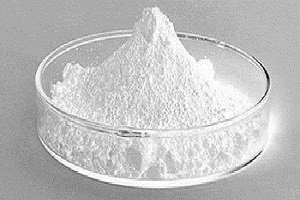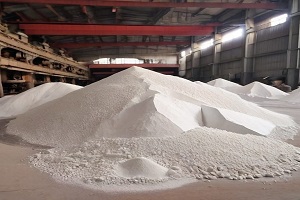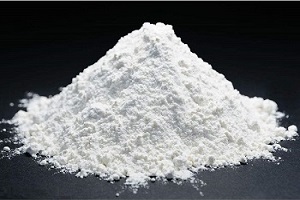- Unit 13,Floor 5h, No 179, Orchid Building, East-Ferdows, Tehran, IRAN
- info@Armaantejarat.com
- 0098912021800

Edible calcium carbonate
Edible calcium carbonate
Edible Calcium Carbonate: A Comprehensive Guide, Benefits, Uses, Types, and Key Points Calcium carbonate (CaCO3) is one of the most abundant minerals in the Earth’s crust, found in a variety of forms including limestone, marble, chalk, Spanish chalk, and oysters. The edible form of this material, obtained after complex purification and micronization processes (transformation into very fine particles), plays a vital role in the food, pharmaceutical, and animal husbandry industries. This article takes a deeper look at this material, its numerous health benefits, its various uses in various industries, the differences between its types, and important points to consider when choosing and consuming it. Edible Calcium Carbonate: Definition and Processing Edible calcium carbonate is a form of CaCO3 with a very high purity that is designed for human and animal consumption. Its main source is usually limestone or marble, which is extracted from mines. The processing steps include: Extraction and crushing: The extracted raw rock is crushed into smaller pieces. Refining: Mineral impurities and heavy metals (such as lead, mercury, arsenic) are removed through chemical and physical processes so that the final product meets health and food standards. Micronization: Calcium carbonate particles are ground to micrometer dimensions (sometimes below 10 micrometers). This particle refinement increases the specific surface area and, as a result, improves its absorption and dispersion in various products. Precipitation (for PCC): In the precipitation calcium carbonate production method, a calcium hydroxide solution reacts with carbon dioxide to produce pure calcium carbonate with controlled particles. Extensive Health Benefits of Oral Calcium Carbonate Calcium, of which calcium carbonate is a rich source, plays a multifaceted role in the body’s physiology: Spine Healthy bones and teeth: More than 99% of the body’s calcium is stored in bones and teeth, providing their structure and strength. Adequate calcium carbonate intake is crucial during growth, bone maturation, and also in old age (to prevent osteoporosis caused by aging and menopause). It also helps maintain healthy gums. Vital role in muscle function: Calcium ions (Ca²⁺) play a fundamental role in the process of muscle contraction, including heart muscle. Calcium deficiency can lead to muscle spasms, tremors, and general weakness. Transmitter of neurotransmitters: Calcium acts as a secondary messenger in nerve cells and helps release neurotransmitters. This is essential for nerve communication and brain function. Heart Rate and Blood Pressure Regulator: Calcium plays a role in regulating the normal rhythm of the heart and also in the constriction of blood vessels. Studies have shown that adequate calcium intake can help control blood pressure. Helps with blood clotting: Calcium is an essential clotting factor in the blood clotting cascade, which prevents heavy bleeding. Powerful digestive soother: As an antacid, calcium carbonate reacts with hydrogen ions (H⁺) in the stomach and neutralizes stomach acid (CaCO₃ + 2HCl → CaCl₂ + H₂O + CO₂). This property makes it an effective ingredient for the temporary treatment of heartburn, acid indigestion, and upset stomach. Prevents certain diseases: Some preliminary research suggests that adequate calcium intake may be linked to a reduced risk of certain cancers (such as colon cancer) and premenstrual syndrome (PMS), although more research is needed in this area. Wide range of applications of edible calcium carbonate The adaptability and safety of edible calcium carbonate make it an ideal choice for various industries: Food industry (as additive E170): Fortification: Added to milk, yogurt, cheese, juices, breakfast cereals, bread and cakes to increase calcium content and help promote bone health, especially in products that are naturally low in calcium. PH and acidity regulator: Controls and stabilizes acidity levels in products such as jams, jellies and beverages. Anti-caking agent: Prevents particles of powders (such as powdered sugar, salt and spices) from sticking together and maintains their flowability. Firming agent: Maintains the texture and consistency of fruits and vegetables in canned and processed products. White colorant: As a natural white colorant in products such as toothpaste, chewing gum and some sweets. Cheese production: As part of the production process of some cheeses to improve the quality of the curd. Pharmaceutical and food supplement industries: Antacid production: A major component of many chewable tablets and antacid syrups. Calcium supplements: The most common form of calcium supplement due to its high calcium content (about 40% by weight) and good bioavailability. Excipients: As a filler, binder, and lubricant in tablet and capsule formulations. Livestock, poultry, and aquaculture feed: Livestock and poultry feed: Essential for bone growth, skin strength, and quality milk and egg production. It is especially vital for laying hens to provide the calcium needed for eggshell formation. Aquaculture: To regulate the pH of water in fish and shrimp ponds, which helps improve water quality and reduce stress in aquatic animals. It also serves as a source of calcium for building the skeleton in shrimp. Understanding the Types of Edible Calcium Carbonate: GCC vs PCC Ground Calcium Carbonate (GCC): Source: Natural limestone and marble. Process: After mining, the ore is crushed and then ground (without chemical modification). Characteristics: Particles of different sizes (broader particle size distribution), lower specific surface area, and variable purity depending on the mineral source. Application: Mostly used in the food industry as a filler, stiffener, and in livestock and poultry feed. More economical due to lower cost. Precipitated Calcium Carbonate (PCC): Source: Produced through a chemical reaction. Process: Usually through the process of “carbonation” in which carbon dioxide gas (CO₂) is passed through a solution of calcium hydroxide (Ca(OH)₂) to produce CaCO₃ as a pure precipitate. Characteristics: Very fine particles, with controlled size and shape (such as aragonite or calcite), high specific surface area, very high purity, and greater whiteness. Applications: Preferred in pharmaceuticals, dietary supplements, and as a high-quality additive in the food industry (especially for fortification and desirable white color). Important considerations for consumers and manufacturers Bioavailability: Calcium carbonate alone requires some stomach acid for digestion. People with low stomach acid (such as the elderly or those taking acid-reducing medications) may have less absorption. Taking it with food optimizes absorption. Vitamin D: Key to Calcium Absorption: Vitamin D is essential for the active absorption of calcium from the intestine. Vitamin D deficiency can impair calcium absorption even with adequate supplementation. It is recommended to take calcium supplements with vitamin D or to consume food sources rich in vitamin D. Appropriate dosage: Various health organizations (such as the Institute of Medicine) have set Recommended Daily Allowances (RDA) and Tolerable Upper Intakes (UL) for calcium. Exceeding the UL can lead to complications such as hypercalcemia (high blood calcium levels), kidney stones, severe constipation, and impaired absorption of other minerals such as iron and zinc. Drug interactions: Calcium carbonate can interfere with the absorption of some medications. For example, it reduces the absorption of tetracycline and fluoroquinolone antibiotics, proton pump inhibitors, and levothyroxine (a thyroid medication). It is recommended that these medications be taken at least 2-4 hours apart from calcium supplements. Choose a quality product: When buying calcium supplements or fortified foods, look for products that are approved by reputable organizations (such as the FDA in the United States or the Food and Drug Administration in Iran) and have the standard and health apple logo. Pay attention to the information on the label, especially the amount of calcium per serving and the presence of vitamin D. Summary Edible calcium carbonate is a mineral of high biological importance and wide industrial applications. Understanding the differences between GCC and PCC, paying attention to points related to absorption, drug interactions and dosage, helps us to benefit from this nutrient in the best way to maintain our health and improve the quality of food and pharmaceutical products. Its role as an essential source of calcium has made it one of the mainstays in the nutrition basket and production of related industries.
Similar Blog


The difference between micronized and coated calcium carbonate
Calcium carbonate is a chemical compound with the formula CaCO3 and is present in the structure of various rocks, including limestone. This compoun...
Application of calcium carbonate in industries
Calcium Carbonate Powder in Industries Calcium carbonate powder, precipitated products and dolomite are one of the most important and diverse materia...
Application of coated calcium carbonate as a filler
Coated Calcium Carbonate as a Filler In this text, we are going to examine coated calcium carbonate as a filler. Calcium carbonate accounts for about...



